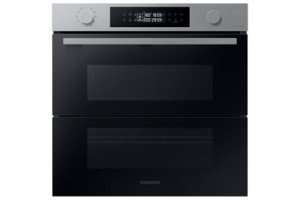The Rise of Integrated Cookers and Hobs: A Comprehensive Guide
In the modern-day kitchen, effectiveness, style, and area optimization are key factors to consider for homeowners and aiming chefs alike. Among the most significant trends in kitchen style is the increasing appeal of integrated cookers and hobs. These appliances not just improve the cooking experience but likewise raise the aesthetic appeals of the kitchen area. This article explores the attributes, benefits, functions, and factors to consider surrounding integrated cookers and hobs, supplying readers with a comprehensive understanding of their benefits.
What Are Integrated Cookers and Hobs?
Integrated cookers and hobs refer to cooking appliances that are built into the kitchen cabinetry, providing a seamless look and taking full advantage of using space. Integrated appliances are created to mix with the aesthetic of the kitchen rather than standing out like traditional designs.
Types of Integrated Cookers and Hobs
Generally, integrated cooking appliances consist of:
- Integrated Hobs: These are cooktops that fit flush into the kitchen countertop. They can be gas, electric, induction, or a mix of these innovations.
- Integrated Ovens: Built directly into the cabinets, integrated ovens can come as single, double, or multifunctional models, using varied cooking capabilities.
- Mix Units: Some designs combine an oven and hob into a single device, using a compact service for smaller sized cooking areas.
Advantages of Integrated Cookers and Hobs
1. Space Optimization
Integrated cookers and hobs are perfect for small kitchen areas. By embedding the cooking appliances into cabinetry, property owners can utilize their kitchen space more effectively, leaving more room for meal preparation and movement.
2. Visual Appeal
These appliances provide a streamlined and modern-day want to the kitchen. The ability to pick finishes and incorporate them into the surrounding kitchen cabinetry develops a unified style that enhances the total appearance of the kitchen.
3. Improved Functionality
Integrated cookers and hobs often come with sophisticated technology functions, such as smart controls, timers, and cooking presets, improving user experience and making it possible for effective cooking.
4. Enhanced Safety
Lots of integrated hobs include safety steps such as child locks and automated shut-off functions. This makes them safer than traditional freestanding models, especially in households with children.
5. Increased Resale Value
Modern homes with integrated appliances often attract greater resale worths. Read A lot more for sleek styles and modern conveniences, making integrated cooks and hobs a sensible investment.
Functions to Consider When Choosing Integrated Cookers and Hobs
When choosing integrated cookers and hobs, a number of functions ought to be taken into account:
1. Cooking Technology
- Induction: Provides quick and efficient cooking, easy to clean, and gives precise temperature level control.
- Gas: Offers standard cooking benefits with immediate heat but requires adequate ventilation.
- Electric: Provides constant heat and is offered in numerous styles.
2. Size and Configuration
- Oven Capacity: Should suffice for the family's cooking requirements.
- Hob Size: Depending on the variety of burners/vessels required for simultaneous cooking.
3. Control Mechanisms
- Touch Controls: Provide a streamlined appearance and ease of cleaning.
- Knob Controls: Offer tactile feedback and are easy to use.
4. End up and Style
Integrated cookers and hobs been available in various finishes, including stainless-steel, black glass, and even adjustable alternatives to match kitchen cabinetry.
5. Energy Efficiency
Go with energy-efficient models that can minimize utility costs and lower environmental impact.
Maintenance and Care
To maintain the performance and durability of integrated cookers and hobs, regular upkeep is crucial:
- Clean the surfaces: Regularly clean down the hob and oven surfaces to prevent residue build-up.
- Inspect seals and gaskets: Ensure that oven seals are undamaged for efficient cooking.
- Service regularly: Schedule professional upkeep to keep the appliances in top shape.
FAQs
1. What is the difference between built-in and integrated cookers?
Response: Built-in cookers are designed to be set up within kitchen cabinets, whereas integrated cookers are developed to perfectly blend with the cabinetry for a more cohesive look.
2. Are integrated appliances more pricey?
Response: Generally, integrated appliances may have a greater upfront expense compared to freestanding units because of their style and the installation requirements. Nevertheless, they can use long-lasting savings in energy efficiency.
3. Can I set up integrated cookers and hobs myself?
Response: While some house owners might have the ability to handle the setup themselves, working with an expert is suggested to make sure correct fit and function, particularly for gas appliances.
4. Are integrated cookers and hobs simpler to clean?
Answer: Integrated hobs usually have less crevices, making them much easier to clean. Nevertheless, the specific cleansing requirements will depend upon the products utilized in the device.
5. What should I examine before buying?
Response: Check the size of your kitchen area, cooking needs, energy efficiency rankings, and compatibility with existing kitchen cabinetry.
Integrated cookers and hobs are becoming significantly preferred in contemporary cooking areas, combining functionality with aesthetic appeal. By understanding their benefits, features, and upkeep needs, homeowners can make informed decisions when choosing the best appliances for their cooking areas. As trends in kitchen style continue to progress, integrated cooking services will likely stay at the leading edge of home innovation, assuring both practicality and design.

